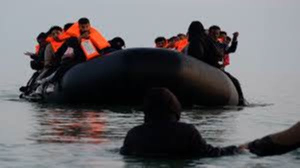David Owusu-Ansah, Historical Dictionary of Ghana. Third edition. Lanham and Oxford: Scarecrow Press, 2005. lxxix + 332 pp. Maps, acronyms and abbreviations, chronology, bibliography, appendices. $77.00 (cloth), ISBN 0-8108-5328-0.
Reviewed for H-Africa by Steven J. Salm, Department of History, Xavier University and Published by H-Africa@h-net.msu.edu (October 2007).
Updates to the New Edition
David Owusu-Ansah's third edition of the Historical Dictionary of Ghana, number 97 in Scarecrow Press's Historical Dictionaries of Africa series, is a handy and valuable reference tool. Owusu-Ansah co-authored the second edition (1995) with Daniel Miles McFarland, a colleague of his at James Madison University, who passed away a few years ago and to whom he dedicates this work. This edition updates the momentous events of the last decade, from Jerry John Rawling's second term as president to the seminal elections of 2000 that brought John Kufour to power. Although it is aimed at the reference reader, academics and all those who take an interest in Ghanaian history and culture will find this work functional and informative.
The book includes four maps, eleven pages of acronyms and abbreviations, and two short appendices. Additional tools to help the reader navigate the complexity of Ghana's history and culture include an exhaustive fifty-one-page chronology, a much improved fourteen-page introductory essay, and a serviceable fifty-one-page bibliography. With more than 170 new and updated entries from the previous edition, the chronology offers a detailed and thorough inventory of historical events from the earliest evidence supporting human habitation to the inauguration day of the fourth government of the Fourth Republic in 2005. Readers will find this a practical and efficient way to look up important dates that they might otherwise tiresomely have to seek out within the text of other works. Touching on a wider range of topics than the previous edition, the introduction contains brief descriptions of Ghana's geography and population, and an overview of its history, with the bulk of space given to the colonial and independence periods. The introduction updates readers with data from the most recent population census in 2000 and presents information about Ghana's numerous linguistic and cultural groups.
Owusu-Ansah divides the bibliography into sub-sections that include different archival sources, various historical periods, and significant themes, including economy, geography, arts, language and literature, culture, religion, education, and health. This edition includes new categories such as "Regional Studies/Local History" and "Health," and groups together some listings from the previous edition. The absence of a separate section on "Gender Studies," considering the growing wealth of research on this topic, is particularly notable. The longest sub-section is "History since Independence" with roughly the same number of references that appeared in the previous edition, but with a few recently published works. The section on the colonial era, in contrast, offers nearly one-half the works that appeared in the previous edition. The biggest changes come in the "Arts" and "Culture and Social Life" sections; both have a reduced number of entries, but also show the greatest number of updated publications. The content of the bibliography is adequate for anyone interested in finding out more about relevant topics but there are some issues with organization. For example, "General History," the first of five historical sub-headings, contains ten works on mostly unrelated topics, including traditional rule in the twentieth century, the West African Student's Union, the West African Youth League, and Europeans in West Africa in the sixteenth century. Readers may have to spend more time finding what they need, but anyone looking for a diverse array of works on Ghanaian history and culture will find the bibliography of use.
The bulk of the work is devoted to the 265-page dictionary containing entries on significant people, places, and events in Ghana's history. With hundreds of updated entries and many completely new ones, Owusu-Ansah must be commended for making substantial revisions, including new entries on HIV-AIDS, updates to regional issues like the Yendi conflict, and, of course, biographical information on recent political figures like John Agyekum Kufour.
Updating an historical dictionary is a thankless job. Inevitably, there will be certain people and places deemed significant by a reviewer that go unmentioned. One cannot be expected nor is one able to provide an entry relating to everyone and everything from Ghana's past and present. Readers see what Owusu-Ansah deems important enough to be included. As in previous editions, the main focus is on political figures and events. This is merited as readers new to Ghanaian history are asked to comprehend countless personal names, acronyms, and places, and the dictionary provides various means of determining their relevance and meaning effectively and efficiently. In this new edition, however, Owusu-Ansah also devotes more space to economic, social, and cultural issues, topics that were somewhat neglected in earlier editions of this work.
Limited in the number of pages, the author had to eliminate some entries from the previous edition and make room for new ones. Comparing a few early pages, for example, one can see that the author eliminated entries on Amanfu (a Danish fort built around 1660), Amedzofe (a beautiful mountainous town that played an important role during the missionary and colonial takeover of the region during the 1800s), and Seth Ametewee (a police constable who attempted to shoot Kwame Nkrumah in 1964). Within the same alphabetical range, one sees two new entries on Oku Ampofo (a Western-trained medical doctor who embraced herbal treatments) and Ephraim Amu (a musician and composer who paved the way for the use of local languages in western forms of church and classical music). Owusu-Ansah also includes new entries on important female political and business leaders in Ghanaian society, including Florence Abena Dolphyne, Annie Ruth Jiagge, and Afua Esther Ocloo. From these few examples, it is clear that Owusu-Ansah succeeds in his attempt to increase the breadth of information on significant, non-political and non-male historical figures.
For all its strengths, the work is not without its faults. In some cases, the author fails to divulge the deeper meanings or alternate uses of words. For example, "Heavily Indebted Poor Countries" rightfully merits a new entry in this edition, particularly with the debate that it caused in Ghana, but the author describes it in the economic sense only and does not cite its popular and often satirical context to define things such as a road junction or a personal feeling. "Going HIPC" (pronounced Hipic) and "HIPC Junction" became common phrases in and around Accra. In other cases, there are problems of organization. Readers interested in religion will find an entry for "Christianity" but none for Islam, a topic that is located under the heading "Muslims" instead. These are not catastrophic failures but they do take away from the overall serviceability of the work. The effectiveness of the book, however, is improved dramatically by a new cross-referencing format that provides links to entries in bold, thus allowing the reader to delve more deeply into related issues than was possible in earlier editions.
Although the work devotes greater attention to cultural and social issues, the new entries are sometimes written more like those found in an encyclopedia. Utilizing cross-references liberally, entries for "Music" and "Literature" provide ample information, but they seem almost to be add-ons and suffer from occasional organizational, editing, and cross-referencing errors. "Music" provides cross-references to Ephraim Amo, a link that can be found under the correct spelling of his surname (Amu) and another to E. T. Mensah, whose individual entry fails to appear at all. Highlife, one of Ghana's most prominent music forms, is mentioned under "Music," but does not receive any individual treatment. It is understandable that there are no entries for less prominent music forms, but Ghana's musical legacy is derived in large part from the success and pervasiveness of highlife and certainly it deserves to stand on its own. In general, Owusu-Ansah does not cover some of the new topics with the same attention to detail with which he manages the others.
There are also problems of omission, but these may be in the eyes of this reviewer only. Dance, theater, and cinema merit attention but are not included. Under "Media," the author gives a brief overview of the history of newspapers, yet he fails to elaborate on government control of the media during the independence era, particularly the much-talked-about culture of silence that gripped Ghanaians during the 1980s. Almost as surprising is the absence of information on radio and television, media forms that have exploded in popularity during the last fifteen years. For the reader interested in gaining more current perspectives on Ghanaian culture and society, these would be helpful additions.
Scarecrow Press is to be commended for publishing twenty new and revised dictionaries in the Historical Dictionaries of Africa series since the turn of the millennium. In each case, they are timely and represent places of interest for academics and general readers alike. Ghana fits this bill as a stable and democratic country that has seen enormous progress since the release of the previous edition in 1995. Given that scholarship on Ghana continues to grow at a rapid pace, Owusu-Ansah does a praiseworthy job of amassing a considerable amount of new information and presenting it in an accessible format. Accepting its limitations, this latest edition provides comprehensive updates and is an invaluable reference tool that everyone interested in Ghanaian history and culture should keep close at hand.
General News of Thursday, 15 November 2007
Source: David Owusu-Ansah - James Madison University












